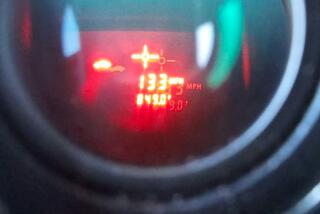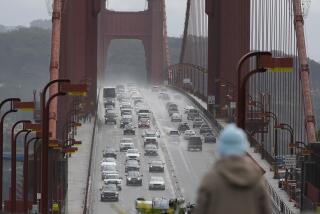The Next L.A. / Reinventing Our Future : Transportation : IDEA FILE: Paying for Congestion
- Share via
How It Works
Just as a telephone company charges callers higher rates for peak-hour calls, motorists would be charged a fee for driving during rush hour. Cars would be equipped with transponders that log the time of day that the vehicle is driven, and indicate whether it travels on a congested thoroughfare. This way, a farmer driving on an isolated country road in Imperial Valley at 5 p.m. would not be penalized, but a motorist on Interstate 5 would be charged a fee. Drivers would receive a monthly bill.
Benefits
Drivers would avoid crowded freeways during peaks hours.
Short-Term or Long-Term Impact?
Long-term.
Supporters
Proponents say that, unlike a gas tax that indiscriminately forces all drivers to pay, a transponder would penalize only those who drive during peak hours in congested areas. It would all but eliminate unnecessary trips on freeways during rush hour. No one would go out for a recreational drive at 4 p.m. Motorists would schedule shopping trips during the middle of the day.
Opponents
Many motorists would see this as crimping their independence. No longer would they be able to drive anywhere at anytime unless they were willing to pay the price. It would forever change the way people drive. And critics say it could infringe on individuals privacy. Highway officials would have a virtual log of each individual’s road trips. It would also necessitate the creation of a governmental arm to handle billing and issuance of transponders.
The Costs
The technology exists to place credit card-sized transponders on vehicles. In fact, they are currently used on several roadways and bridges. Traffic engineers would determine a price rate steep enough to make motorists only use the car during peaks hours if they had no alternative.
REALITY CHECK
Transponders would probaly achieve their goal but would be very unpopular with voters. Yes.
More to Read
Sign up for Essential California
The most important California stories and recommendations in your inbox every morning.
You may occasionally receive promotional content from the Los Angeles Times.













